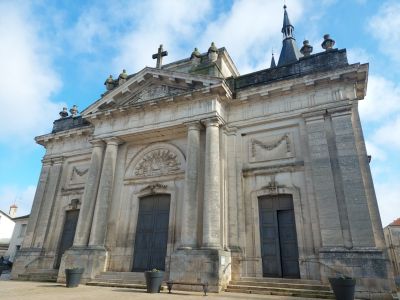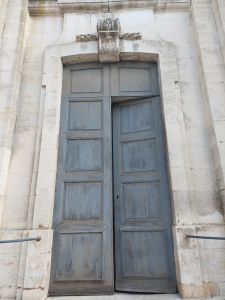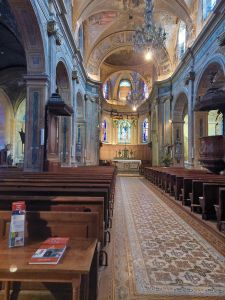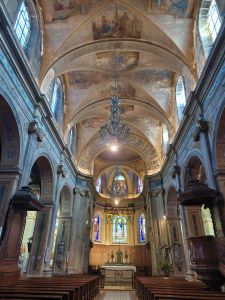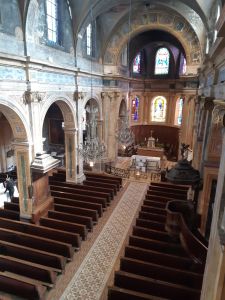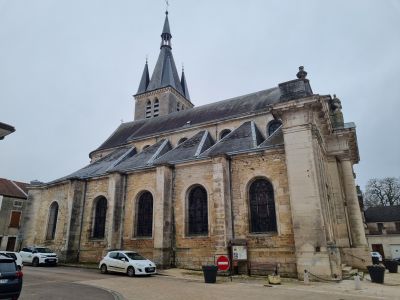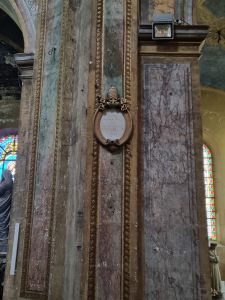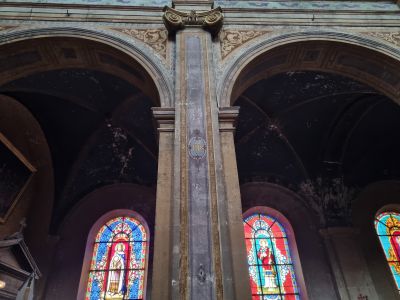Church | 1350-1770-1784-1874 | Gothic, Neoclassical | Catholic Church
Map
Opening hours
01 January - 31 December
Mon 10.00 - 17.30
Tue 10.00 - 17.30
Wed 10.00 - 17.30
Thu 10.00 - 17.30
Fri 10.00 - 17.30
Sat 10.00 - 17.30
Sun 10.00 - 17.30
Guided tour
Religious offices
Description
The origins of this Petite Cité de Caractère© can be traced back to the 9th century. Its strategic location between the Kingdom of France, the Duchy of Burgundy and the Holy Roman Empire made it a fortified stronghold from the 11th century onwards.
A succession of illustrious lords, including crusading companions of Saint Louis, left their mark on the town over the years.
In 1620, the Marquis de Vitry, a close friend of Louis XIII, bought the county of Châteauvillain, which Louis XIV made a dukedom for his son. However, this title was not registered by the King until 1703, for his legitimate son, the Count of Toulouse, who had acquired these lands. It was his own son, the Duke of Penthièvre, who had the church of Our Lady of the Assumption rebuilt after the nave collapsed in 1767.
There is evidence of a first church as early as 1350, as evidenced by the Romanesque bell tower, which can still be seen today. The reconstruction, based on a basilica-style plan, was initially entrusted to a local architect, Massol, who was accused of allowing the choir to collapse. He was replaced by François-Nicolas Lancret, who completed the work in 1783.
But it was Germain Soufflot, architect of the church of Saint Genevieve in Paris (now the Panthéon), who corrected the neo-classical façade. The façade, built of stone from nearby quarries, has been listed as a Historic Monument since 1972. The rest of the building is listed as a Historic Monument.
Photos
Remarkable elements
Nativity Statue
This polychrome wood sculpture from 1655 depicts the Holy Family. It is a copy of the marble sculpture created by Michel Anguier for the high altar of the Church of Notre-Dame du Val-de-Grâce, founded by Queen Anne of Austria in homage to the Nativity.
Frescoes by Télémaque
The church is entirely decorated with the work of the self-taught regional painter Jean-Pierre Jourd'heuil (1826-1887). He practised painting by copying the great masters and illustrating biblical scenes, which he coloured from black and white booklets. The blue vault of the choir, dotted with golden stars, is typical of his style.
Today, many scenes have been altered by time, but several themes are addressed:
• the Old Testament on the dome;
• the baptism of Christ, depicted above the baptismal font, is a copy of the painter Mignard;
• the New Testament in the nave, particularly the Virgin Mary, recognisable by the blue colour associated with her;
• the Beatitudes depicted in phylacteries on the rood screen.
Chapel of the Virgin and Child
Above the altar stands a Virgin and Child in white Carrara marble from the late 18th century. It is believed to be the work of an Italian artist. Stolen in 1793, it was returned to its place in the building thanks to the intervention of the prefect in 1803.
Behind this statue is a rosary depicting the 15 mysteries of Christ and Mary.
Stained glass windows
The stained glass windows were originally white. Parishioners complained about the heat, so stained glass windows depicting historical scenes were installed, made by the Champigneulles workshops in Bar-le-Duc under the direction of the famous master glassmaker Louis-Charles-Marie Champigneulle.
An interesting feature is that the saints are not mixed together, but face each other on either side of the nave.
Organ
In 1786, two organs made by Jean Richard were installed: one in the choir and the second in the gallery.
The choir organ disappeared during the Revolution, while the gallery organ was restored in 1877 by the famous organ builder Aristide Cavaillé-Coll. He enlarged it and retained only the front section, the façade pipes and a few decorative elements from the original case.
It is now listed as a historic monument.
Partners
Nearby
Circuit
Flora in churches

For the first time since the creation of the exhibition on flora in churches, the panels will travel to churches in Haute-Marne and Vosges (members of the network) from March 2025 to January 2026...






